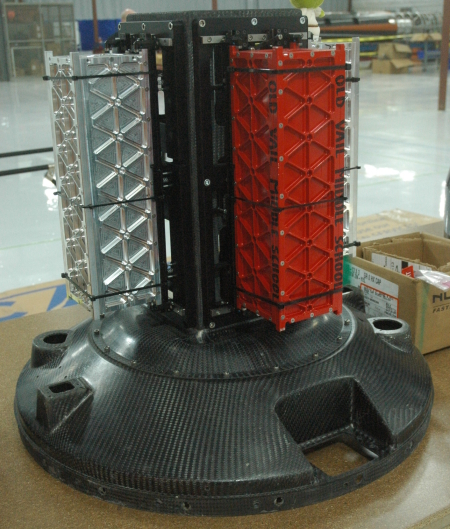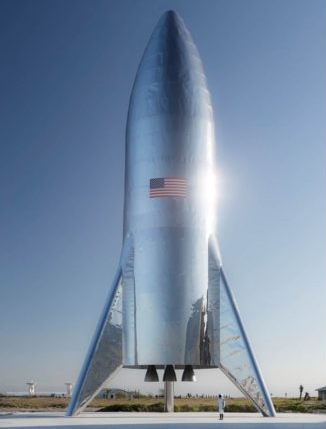Rocket Lab gets DARPA launch contract
Capitalism in space: Rocket Lab today announced a new launch contract with DARPA, dedicating the company’s first launch in 2019 to that government military research agency.
DARPA’s Radio Frequency Risk Reduction Deployment Demonstration (R3D2) mission is scheduled for launch in late February and intends to space-qualify a prototype reflect array antenna to improve radio communications in small spacecraft. The antenna, made of a tissue-thin Kapton membrane, packs tightly inside the small satellite for stowage during launch, before deploying to its full size of 2.25 meters in diameter once it reaches low Earth orbit. This high compaction ratio enables larger antennas in smaller satellites, enabling satellite owners to take advantage of volume-limited launch opportunities while still providing significant capability. The mission could help validate emerging concepts for a resilient sensor and data transport layer in low Earth orbit – a capability that does not exist today, but one which could revolutionize global communications by laying the groundwork for a space-based internet.
…The mission, the first of monthly Electron launches this year, will lift-off from Rocket Lab Launch Complex 1 on the Māhia Peninsula of New Zealand. To ensure precise insertion and responsible orbital deployment, the R3D2 payload will be deployed via the Electron Kick Stage to a circular orbit. Using this unique launch method, Electron’s second stage is left in a highly elliptical orbit where the stage is subject to significant atmospheric drag, causing it to de-orbit and burn up to nothing in a reduced time frame. The Kick Stage is then used to deploy the satellite payload to a precise orbit, following which the Kick Stage can perform a de-orbit burn to speed up its re-entry, leaving no orbital debris behind in space. [emphasis mine]
The highlighted sections in the quote above indicate the schedule. Rocket Lab had suggested last year that once it successfully completed its November and December 2018 launches it would in 2019 launch monthly. They are still clearly pushing for that schedule, but it is also clear now that they will not launch in January and their February launch will be late in the month, suggesting the next launch will likely not be in March.
These delays at this point are not significant, though if they do not ramp up to that monthly schedule by the end of 2019 it will be.
This late announcement of a payload for the first 2019 launch also suggests that DARPA was willing to pay a premium to leapfrog over Rocket Lab’s already signed customers. My industry sources also suggest that the U.S. military has in the past few months become very very interested in these new smallsat rockets, and has been approaching them all to arrange future flights.
Capitalism in space: Rocket Lab today announced a new launch contract with DARPA, dedicating the company’s first launch in 2019 to that government military research agency.
DARPA’s Radio Frequency Risk Reduction Deployment Demonstration (R3D2) mission is scheduled for launch in late February and intends to space-qualify a prototype reflect array antenna to improve radio communications in small spacecraft. The antenna, made of a tissue-thin Kapton membrane, packs tightly inside the small satellite for stowage during launch, before deploying to its full size of 2.25 meters in diameter once it reaches low Earth orbit. This high compaction ratio enables larger antennas in smaller satellites, enabling satellite owners to take advantage of volume-limited launch opportunities while still providing significant capability. The mission could help validate emerging concepts for a resilient sensor and data transport layer in low Earth orbit – a capability that does not exist today, but one which could revolutionize global communications by laying the groundwork for a space-based internet.
…The mission, the first of monthly Electron launches this year, will lift-off from Rocket Lab Launch Complex 1 on the Māhia Peninsula of New Zealand. To ensure precise insertion and responsible orbital deployment, the R3D2 payload will be deployed via the Electron Kick Stage to a circular orbit. Using this unique launch method, Electron’s second stage is left in a highly elliptical orbit where the stage is subject to significant atmospheric drag, causing it to de-orbit and burn up to nothing in a reduced time frame. The Kick Stage is then used to deploy the satellite payload to a precise orbit, following which the Kick Stage can perform a de-orbit burn to speed up its re-entry, leaving no orbital debris behind in space. [emphasis mine]
The highlighted sections in the quote above indicate the schedule. Rocket Lab had suggested last year that once it successfully completed its November and December 2018 launches it would in 2019 launch monthly. They are still clearly pushing for that schedule, but it is also clear now that they will not launch in January and their February launch will be late in the month, suggesting the next launch will likely not be in March.
These delays at this point are not significant, though if they do not ramp up to that monthly schedule by the end of 2019 it will be.
This late announcement of a payload for the first 2019 launch also suggests that DARPA was willing to pay a premium to leapfrog over Rocket Lab’s already signed customers. My industry sources also suggest that the U.S. military has in the past few months become very very interested in these new smallsat rockets, and has been approaching them all to arrange future flights.


